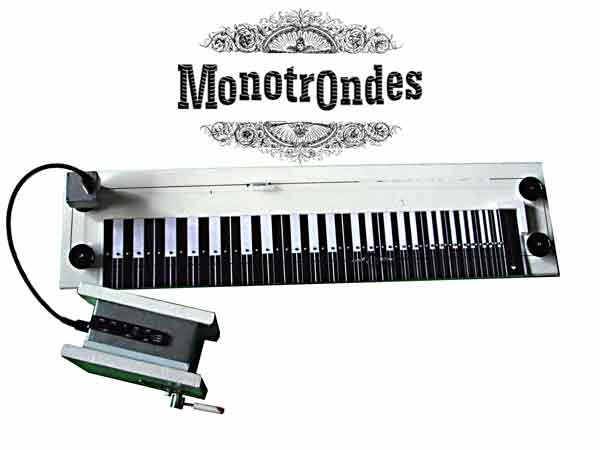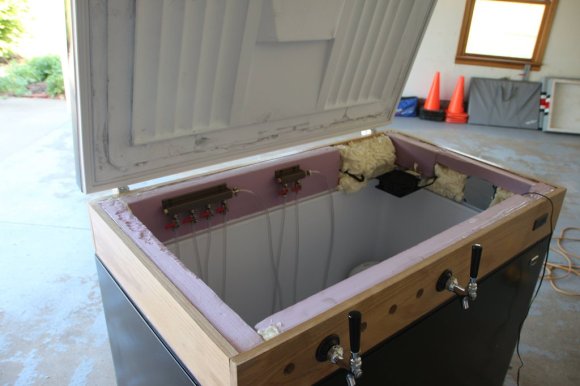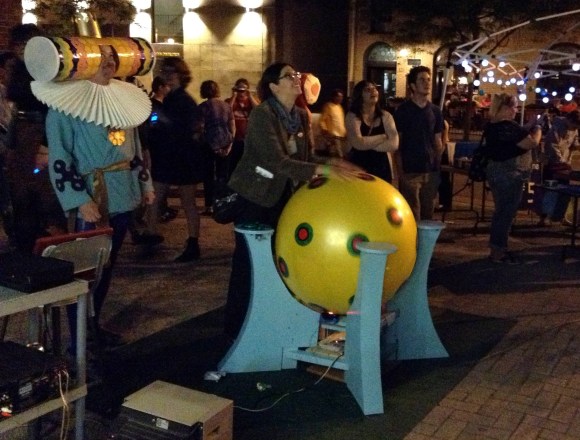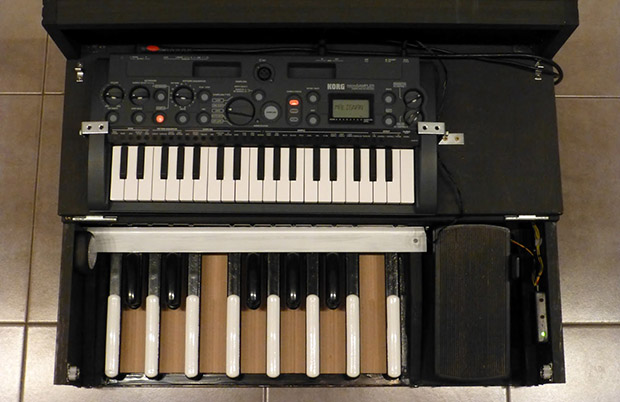
[Ville] loves the sound of an ondes martenot and decided to build his own. No, it’s not made of vacuum tubes like a 1920s original, this one is made out of a cheap, off-the-shelf analog synth and just a few extra parts.
The ondes martenot is a theremin-like musical instrument; instead of waving your hands around aerials on the theremin, the ondes uses a small ring attached to the player’s finger on a wire loop and a volume lever. The ondes isn’t a common instrument by any means, but Radiohead uses one several in any event.
[Ville] began his build by taking a small, cheap, and new Korg Monotron analog ribbon synth, cracking it open, and reading the schematics. A 100k multiturn pot was wired into the monotron and fastened to a printed paper keyboard with a system of pulleys and a small metal ring. With the multiturn pot wired into the pitch input on the monotron, [Ville] had a semi-accurate and very functional ondes martenot replica.
You can hear [Ville]’s ondes in action after the break. It’s a little rough starting out, but by the time he’s looping multiple phrases it really does sound wonderful.
Continue reading “The Ondes Martenot; Better Than A Theremin”

















